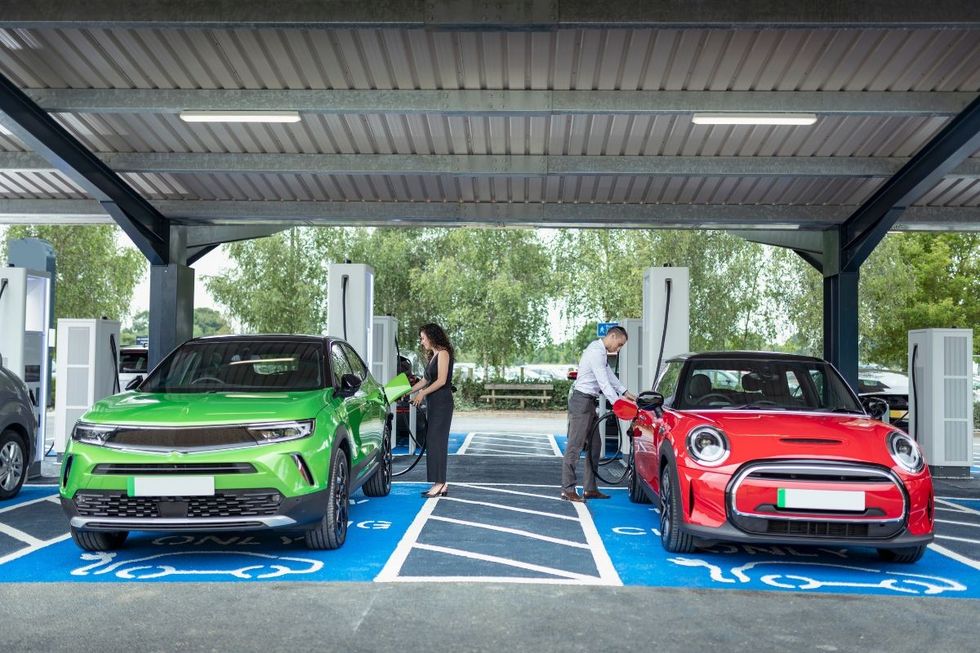Rural drivers risk being left behind in EV switch with a clear lack of chargers - 'Simply can't continue'
WATCH: Rachel Reeves says she will continue to support the purchasing of electric vehicles
The Government aims to have 300,000 chargers installed by the end of the decade
Don't Miss
Most Read
Trending on GB News
Drivers in rural areas could fall by the wayside in the electric vehicle revolution as new data shows a distinct lack of chargers outside of towns and cities.
According to the latest data from the National Audit Office (NAO), only 15 per cent of public chargepoints in England are in rural areas.
While the Department for Transport has an ongoing programme to address regional differences, it has no specific targets on the allocation of chargers to urban and rural areas.
The NAO report suggests that the DfT could look into alternative measures to ensure it meets its target of having 300,000 public chargepoints installed by the end of the decade.
Do you have a story you'd like to share? Get in touch by emailingmotoring@gbnews.uk

There are fears that rural drivers could be lacking access to EV charging infrastructure
GETTY
Around 44 per cent of all public chargepoints in the UK are in London and the South East of England. London alone has twice the number of chargers that Scotland, Northern Ireland, and Wales have combined.
One key recommendation from the report is to consider whether developing regional demand forecasts for urban and rural locations would aid the rollout of chargers.
It also calls for the development of strategic principles for intervention to ensure future programmes support the rollout of EV chargers.
Reacting to the data, Melanie Shufflebotham, co-founder and COO of Zapmap, said having access to charging at a local level was "essential" to ensure the transition away from petrol and diesel is successful.
She added: "The UK’s EV charging network has seen transformational growth, but more still needs to be done to ensure it is fairer for drivers regardless of where they live.
"Over the past couple of years, there has been a significant leap forward in the number of charge points available to EV drivers, particularly the crucial ultra-rapid chargers and charging hubs to support EV drivers on longer journeys."
Similarly, Ginny Buckley, chief executive of Electrifying.com, noted the clear disparity between London and the rest of the UK and said it "simply can't continue" if everyone is to make the switch to a zero emission vehicle.
Buckley continued, saying: "Private charge point providers have been clear; the money and resources to ramp up installations is there, but the bureaucracy around planning permissions and grid connections are causing significant delays.
"This is why we need decision-makers to take action and cut through the red tape holding back this rollout as a matter of urgency."
According to Zapmap, there are 72,594 charging devices around the UK, with the UK seeing the addition of 1,135 new chargers last month.
The NAO report highlighted how there are 2,377 ultra-rapid chargepoints within one mile of the strategic road network, as of July 2024. This is compared to a target of 2,500 by 2030, showing how progress is developing rapidly.
It is estimated that more than 100,000 chargepoints will be supported by the Local Electric Vehicle Infrastructure (LEVI) fund, with £450million being allocated between 2022-23 and 2024-25.
LATEST DEVELOPMENTS:

There are more than 72,500 EV chargers around the UK
PAAlmost £1billion in funding has been announced for the rapid charging fund, in hopes of future-proofing electricity capacity on the strategic road network.
Quentin Willson, founder of FairCharge and advisory board member of Electric Vehicles UK, said: "There are still gaps in the charging network and the NAO are right to flag this up.
"Government needs to support CPOs in building more sites where EV penetration and charger utilisation is low.
"Often the business case for a rural charging hub is hard to justify, so Government needs to treat a greater rural charger roll out as critical infrastructure that requires support and subsidy”








